What is alcohol and why is it in skincare products?
Alcohol is a substance that is found in many skincare products. It is made up of ethanol and water, and is often used as a cleansing agent because it is thought to be effective at getting rid of dirt and bacteria. You'll find alcohol in products ranging from toners and astringents to makeup removers and face washes. Alcohol is commonly used as a cleansing agent or solvent because of how cheap it is compared to other ingredients.
Because it's so harsh to bacteria, you'll find alcohol as a key ingredient in hand sanitizers. But, as all of us who are familiar with hand sanitizers know all-too-well, alcohol can be quite drying and harsh on skin. Alcohol inhibits the body's ability to properly moisturize itself. Dry skin needs moisture to keep its plump appearance and avoid fine lines and wrinkles later in life. That's why you should avoid using it in your skincare routine. That's why It's important to read the ingredients list carefully so that you can avoid these products if you want to take care of your skin.
However, alcohol can actually be quite drying and harsh on skin, which is why you should avoid using alcohol-based products in your skincare routine.
How does alcohol affect my skin?
Alcohol has two primary effects on skin: it's both highly irritating and drying for skin. First, its harsh, astringent chemical makeup often irritates skin and causes discoloration and redness. Secondly, Alcohol can dry up your skin's natural oils, making the appearance of wrinkles and sunspots more pronounced. This is because while hydrated skin appears youthful and plump, dried skin can appear wrinkled, cracked, discolored, and sallow. Unfortunately, Alcohol is a fairly common ingredient in skincare and beauty products.
The best approach with alcohol in skincare is to avoid it altogether. Instead, opt for natural ingredient alternatives—either botanicals or essential oils with a delicate aroma, such as lavender or neroli. Botanical ingredients work well too because many produce a cooling effect when applied topically (think peppermint and aloe vera). This leaves skin feeling soothed and tightens pores for an improved complexion. Essential oils are an excellent choice too because they're potent but gentle.
The Controversial Danger of Parabens, Sulfates, and Phthalates
What Are Parabens Anyway?
No doubt you're aware that the products you buy have to be "shelf-stable." (If you're not familiar with that term, basically it means that stuff needs the ability to sit around for a while and stay in good shape.)
Enter parabens. They're a type of preservative that does a great job of stopping bacteria growth. They keep your active ingredients stable, so you can "safely" use your products weeks or months after manufacture.
Notice the quotation marks. While parabens are effective at keeping bacteria at bay, there's another thing they're good at: mimicking estrogen in your body. If your goal is to live a long and healthy life, that's not a good thing. And, as you'll learn, this is a theme contributing to the danger parabens, sulfates, and phthalates, alike.
The Paraben Problem
Parabens act like estrogen in your body. This interferes with the way your hormones function. Doesn't matter if you're male or female: this disruption interferes with your reproductive system and may have implications when it comes to cancer risk.
A 2013 study examined the connection between fertility and a certain paraben (propylparaben, to be exact). The study found an association between decreased fertility and urinary propylparaben. Another study found a similar link between fertility and butylparaben.
What's even more concerning is that environmental estrogens (like parabens) may contribute to a greater risk of cancer. Currently, there's not enough research to support a firm cause and effect, but even a small risk of cancer is enough to make parabens a big problem in my book.
So. Parabens are bad. Why are they still allowed in products? The issue is quantity. The amount of parabens in any particular product is unlikely to cause much harm. The problem comes when you're constantly exposed to parabens on a daily basis.
Parabens are able to penetrate the skin barrier. Because parabens are so common in so many products, we're constantly being exposed to them. A CDC study found propylparaben in greater than 92% of Americans tested. Butylparaben was found in 50% of people. Other studies have found parabens in infants, older children, adolescents, and adults, including pregnant women.
Life stage and gender are irrelevant: parabens are getting into and building up in our systems and in our children's.
But there's good news. A 2016 study on adolescent girls found that paraben levels drop quickly when you avoid them. This study tested girls who used paraben-free products for a set amount of time. After just three days the amount of propylparaben dropped by 45%. In other words: if you leave this stuff alone, it'll leave you alone.
So What's a Sulfate?
Sulfates also play a role in how your personal products look and feel. But they're not a preservative like parabens. Instead, they're there to give your soaps and shampoos a rich, foamy lather.
You know when you wash your hands with a foamy soap and your hands feel "squeaky clean"? That's from sulfates, or another type of detergent. They remove dirt and oil, leaving your skin and hair feeling clean and lightweight.
What's So Bad About Sulfates?
Who doesn't like feeling squeaky clean? Well, you can absolutely have too much of a good thing, and in this case sulfates are to blame. They can be far too effective at washing away oils. Your skin needs some oil on it to stay healthy. Strip it all away and you end up with skin that's dry and irritated.
The same goes for shampoos. Use too many products with sulfates and you'll end up with a scalp that's dry, itchy, and uncomfortable.
Oh, and don't get it in your eyes. Massive, massive irritation there.
But that's the best-case scenario.
It's no secret that sodium lauryl sulfate is rough on the skin. That's why many manufacturers convert it into sodium laureth sulfate. Sodium laureth sulfate is gentler on the skin, making it pretty common in lather-rich products. But there's more to this process than meets the eye. In some cases a byproduct called 1,4-dioxane is produced during the conversion process. This dangerous contaminant is a carcinogen linked to organ toxicity. This is a Very Very Bad thing.
Does your product contain 1,4-dioxane? Who knows? Manufacturers don't have to make any indication of it on their labels. The only thing you can do to protect yourself and your family is stay away from any products that list sulfates on their ingredients.
While you do need to be wary of it in conventional products, this dangerous byproduct can be avoided by sticking to safer organic alternatives.
Okay, So What's a Phthalate?
Phthalates (pronounced thal-ates) are a huge group of chemicals with a large array of uses.
Okay. So that description wasn't super helpful. The problem with describing phthalates is that they're everywhere. They're designed to help make plastics less rigid, and you'll find them in a lot of building materials and food packaging. They also make fragrances last longer in personal care products.
Phthalates have a lot of different names. Unfortunately, they may not show up on a list of ingredients at all. Manufacturers are allowed to use the word "fragrance" to stand in for any of thousands of different chemicals, phthalates included.
You don't always know when you're being exposed to phthalates, and they're used almost everywhere. This makes it tough to avoid them. But it's worth the effort to do so, because they're linked to some nasty issues.
The Phthalate Problem
Phthalates are associated with a number of issues. Much like parabens, many of these issues have to do with hormone disruptions. This time it's the men who take on more of the risk.
Exposure to phthalates has been linked to reproductive issues in adult men. Adult men may experience decreased fertility in response to phthalate exposure. Pregnant women with higher phthalate levels in their bodies may also give birth to boys with a condition associated with low fertility.
Phthalate exposure is also linked to reduced levels of testosterone and issues with thyroid hormone production. Both men and women can experience low testosterone levels. The same goes for thyroid production. Thyroid hormones are essential for brain development and metabolism. Mess with this system and you're opening the doors for a slew of other issues.
Pregnant women are also particularly vulnerable to phthalates. Excessive exposure is linked to giving birth to children with behavioral and cognitive problems.
Want to learn more about dangerous ingredients? Sign up for our Free "Dirty Dozen" PDF.
Why You Should Avoid Parabens in Your Beauty & Skincare Products
What are these ingredients, and why are they so nasty?
Without boring you to tears, here is a quick definition of what these ingredients really are.
Parabens are widely used as preservatives in beauty and skincare products to keep bacteria, fungus, and other buildup from developing in them. But see, although the thought behind these guys is essentially good, (I mean, no one wants fungus growing on their lipstick, right?), parabens have really only traded one nasty for another.
What’s the worse that can happen if I don’t avoid parabens in my beauty & skincare products?
Here’s the deal. There’s plenty of reasons why you’re better off avoiding parabens in your beauty & skincare products. And when we say plenty, we mean plenty, girlfriend. Like, as many reasons as to why you should avoid texting your ex after that third cocktail.
Ok, moving on. The reason why parabens get such a bad wrap is that these chemical ingredients are known as serious hormone disrupters. What’s more, with extended use they can harm your fertility, and affect birth outcomes. Oh and increase your risks of skin irritation, and worse yet – cancer.
According to the EWG, parabens should be avoided in all cosmetics and honestly, babe, we tend to agree.
If I’m going to ditch the nasties, how bomb are paraben-free products?
Babe! Paraben-free beauty and skincare products are just as good as those other guys you’re used to reaching for. What’s more, you can use them liberally without worrying that you’re totally messing up your hormones in the long run (and hey, that’s a major plus alone if you ask us).
And while we know a lot of babes might be tempted to buy products that have a longer shelf-life, the truth is that the risk isn’t worth those extra few weeks of use. Plus, when you have amazing alternatives for those everyday culprits, there is no reason to second guess your move to paraben-free products, gorgeous.
The Top Five Worst Ingredients for Skin (And What You Can Use Instead)
1. Parabens
What are they? Parabens are a type of preservative. They give products a longer shelf life by keeping mold and bacteria from growing. You'll know a product contains parabens if the label contains the words "butylparaben," "methylparaben," or "propylparaben." You'll find parabens in a huge range of health and beauty products, including moisturizers, shampoos, and cosmetics. Why should you avoid them? Parabens penetrate your skin and enter your body. Once inside, they can hang around. A 2004 study found traces of 5 different parabens in the breast tissue of 19 out of 20 women studied.
While that doesn't necessarily mean that parabens cause cancer, it does show that they absolutely build up and stay in your body. What we do know is that parabens mimic the hormone estrogen. If you have too much estrogen (or estrogen-mimicking substances) in your body, you have a higher risk of breast cell division and tumor growth. Parabens may also disrupt your endocrine system, leading to reproductive and developmental disorders. Alternatives to parabens: depending on a natural product's formulation, it may or may not need a preservative. Products that are water based generally do. Antioxidants, Vitamin E oil, and rosemary oil extract can all help extend the shelf life of a natural product. Anti-microbial substances, such as grapefruit seed extract, can further hinder the growth of substances that can impact a product's shelf life.
2. Sodium Lauryl Sulfate
What is it? Sodium Lauryl Sulfate (SLS) and its cousin Sodium Laureth Sulfate (SLES) are surfactants. Surfactants cause the sudsy foaming effect you see in shampoos, soaps, and shaving gels. Why should you avoid it? SLS is one of the worst ingredients for skin due to its tendency to cause irritation. It can strip your skin of its natural oils, leading to dry skin, itchiness, and reactions. In some cases it can lead to eczema, dermatitis, and acne around the mouth and chin. SLS and SLES are also very irritating to the eyes, which is problematic as they are often found in shampoos and face wash.
Alternatives to SLS and SLES: There are two major approaches to avoiding SLS and SLES. The first is to use natural surfactants. Ingredients like Decyl Glucoside give you that satisfying foam without irritation or other side effects. It is a mild non-ionic surfactant used in cosmetic formularies including baby shampoo and in products for individuals with a sensitive skin. Many natural personal care companies use this cleanser because it is plant-derived, biodegradable, and gentle for all hair types. You'll find it in natural products like foaming cleansers. The other approach is to forgo the foam altogether. After decades of using foaming products, we associate "suds" with "clean." However, that's not really the case. A product's cleansing abilities don't come from foam - they come from other ingredients. Get comfortable with non-foaming products and you can get rid of SLS without much change in your routine.
3. Formaldehyde
What is it? When it comes to the worst ingredients for skin, formaldehyde is subtle. It's not an ingredient added to products. Instead, it's a byproduct produced by many conventional preservatives. Chemicals like Bronopol, Quaternium-15, and Diazolidinyl urea release formaldehyde as they decompose. The longer a product containing these chemical sits on a store or bathroom shelf, the higher the risk it contains formaldehyde. Why should you avoid it? Easy: it's a carcinogen. According to the International Agency for Research on Carcinogens, it can cause cancer in humans, including leukemia, pancreatic cancer, and skin cancer. It can also cause skin irritation, though compared to the cancer risk this seems like a minor issue.
Alternatives to formaldehyde: If you don't want to treat your skin to the same stuff that preserved the frog you dissected in biology class, look for products that contain natural preservatives. Use the same strategy you would to avoid parabens. Buy from businesses you trust to avoid formaldehyde releasing chemicals.
4. Fragrance
What is it? If you've been reading this blog long, you know all about my one-woman crusade against "fragrance." If you're new, here's the rundown. "Fragrance" is a word used on ingredient labels to stand in for any number of thousands of chemicals. Due to loopholes in US laws, manufacturers don't have to list individual chemicals that provide fragrance to their products. Why should you avoid it? If you use a product with fragrance, there's no way to really know what you're applying to you skin. You could be applying something completely harmless, or something extremely harmful. Some fragrances contain hormone disruptors. Others are extremely irritating and can trigger allergic reactions. Even if you're not worried about the worst ingredients for skin for your own sake, it's worth avoiding fragrance to help protect others who may be sensitive to them.
Alternatives to Fragrance: This is another area where there are two different strategies. First, you can choose to go fragrance free. Look for products that don't contain any fragrance at all. You'll avoid exposing yourself to unknown ingredients and help protect others from fragrance's effect. "But wait," you say. "I like it when my skin products smell good." That's great! Look for natural fragrances instead. Essential oils give products a huge range of amazing fragrances, and often provide additional benefits as well. You'll find them in many natural products, including moisturizers, facial cleansers, and even bath bombs.
5. Oxybenzone
What Is It? Oxybenzone is a very common ingredient in chemical sunscreens. It helps absorb UVA and UVB rays, reducing their impact on the skin. It is usually used with other sunscreen ingredients, as it is relatively weak on its own and helps to keep other chemicals from deteriorating under the sun. Why Should You Avoid It? To be honest, it's worth it to avoid all of the chemicals in sunscreen. Oxybenzone is the worst of the lot, though, because of its ability to mimic estrogen.
Lab studies suggest that oxybenzone exposure may interrupt the hormone system. It can also cause skin irritation. According to the Environmental Working Group and the Centers for Disease Control and Prevention, more than 96 percent of American study participants have oxybenzone in their bodies. Those who report using sunscreen have higher exposures. This chemical builds up the more we're exposed to it, and it's impossible to say what constant exposure will lead to over time.
Alternatives to Oxybenzone: If you're trying to avoid the worst ingredients for skin, there's no better choice than switching to a mineral sunscreen. Unlike chemical sunscreens, where oxybenzone and other ingredients penetrate the skin and enter your body, mineral sunscreens protect your skin from the outside. This is better for your skin, better for your overall health, and even better for the environment. If you wear sunscreen on a regular basis (which you should!), making the switch to a mineral sunblock that contains natural ingredients can make a huge difference.
What are sulfates, anyway?
Often referred to as the most commonly used detergents in the beauty industry, sulfates are quite literally everywhere when it comes to personal care products.
You can credit the excessive foaming action in products like shampoo, body wash, and even toothpaste, to sulfates. And although they produce that intense lathering sensation that can help us feel *extra* clean, the truth is that there are many downsides to reaching for that sulfate-filled body wash of yours.
Why you should avoid sulfates in your fave beauty products.
We get it. Lathering up in the shower can be seriously relaxing. However, there are several negative downsides to using beauty products that are high in sulfates. Let’s break down a few.
- You can seriously irritate your skin, eyes, and even your lungs. The most common negative side effect of using sulfates is that they can produce intense itchiness, irritation, and redness in the skin and scalp. Moreover, they will often dry out your skin and can even cause more acne for some people.
- Every time sulfates go down your drain, they are hurting aquatic wildlife. It’s simple. Sulfates are highly toxic for our cute little friends under the sea. This goes for household cleaning items, as well as beauty products that intensely lather up and then get washed down the drain.
- Most products that contain sulfates are tested on animals (not cool). Since sulfates can be highly irritating for the skin, companies who use them in their products often have little choice but to test on animals. All and all, we just can’t get behind that, babe.
What you can do to ditch sulfates, pronto.
Here’s the good news. Revamping your beauty collection to include products free of sulfates is *way* easy. For real. You can start with basic everyday items that you always reach for. And from there, you can work your way up to a sulfate-free life in no time, girlfriend.
Here are a few products we recommend switching up, right now—including your hair products! Oh yeah, this ultimate guide to toxic skincare includes those tresses.
Your body wash
If you’re not using this product every day, well – that’s a whole other blog post, babe.
In all seriousness though, one of the easiest switches you can make is to opt for a sulfate-free body wash. One that is packed with nourishing natural oils, and that will get you feeling just as fresh as that excessive foaming one does.
BBE’s lineup of body washes is just what you need, and the scents are *to die* for. What’s more, these bad boys leave your skin hydrated and never irritated. From lavender citrus to refreshing peppermint tea tree, you’re sure to find something that will have you forgetting all about that toxic (ex) body wash you just broke up with.
Your face wash
Another staple in every beauty junkie’s product collection is face wash. Unfortunately, though, this is another item where nasty sulfates love to hide.
Consider switching out your usual face wash for one of BBE’s healthy options. If you love the lather that typical face wash creates, we’ve got you covered. Our foaming face wash will have your pores feeling clean as can be, without the guilt of pouring toxic chemicals down your bathroom sink.
Your shampoo
When it comes to generating a crazy amount of suds, shampoo is the queen of all sulfate-filled products.
Luckily, many clean beauty companies are getting behind the sulfate-free movement, babe. Therefore finding a new shampoo you’ll still love is actually relatively easy.
Whether you’re looking for salon-quality options or something more affordable, there are a ton of sulfate-free hair products out there.
Is your sunscreen really safe? Or are you using toxic sunscreen?
How can you tell if you are using toxic sunscreen?
It is the ingredients of course and not just the base of the formula, but the active ingredients. Dr. Oz did a great short interview on Dr. Andrew Weil where they discuss the difference between chemical and physical mineral based sunscreens. Click here to watch this short and easy explanation by these doctors. Understanding the difference in the 2 categories of sunscreens is very important. While the physical, or mineral, sunscreens talked about in the interview create a protective layer on the skin, chemical sunscreens are absorbed through the skin. Physical or mineral sunscreens use only one or two active ingredients - zinc oxide and titanium dioxide. That is all. We're adding a a long list of chemical sunscreen active ingredients to this Ultimate Guide To Toxic Skincare, including some of the more widely used ones listed below:
- Oxybenzone - in addition to high rates of skin allergies, it acts like estrogen in the body, alters sperm production in animals and has been associated with endometriosis in women. It penetrates through the skin and studies have found it present in mother's milk of nursing mothers.
- Octinoxate (otherwise called Octylmethoxycinnamate) - moderate skin allergies are connected, in addition to alteration of hormone activity, reproductive issues, and thyroid and behavioral alterations in animal studies.
- Homosalate - disrupts natural hormones - estrogen, androgen and progesterone. As for other (inactive) ingredients commonly found in toxic sunscreen, here are a few of the most common ones:
- PABA - becoming less commonly used in sunscreen and skincare products after it was found to cause photo sensitivity and allergic reactions including rash and sores. PABA also stains clothing.
- Retinyl Palmitate - studies suggest that this ingredient commonly found in toxic sunscreen may speed the development of skin tumors and lesions when applied to the skin in the presence of sunlight. For more information, check out this article from the EWG.
- Parabens - these commonly used preservatives, (commonly butyl-, ethyl-, methyl-, and propyl-) are associated with both acute and chronic side effects. They can induce allergic reactions, hormone disruption, developmental and reproductive toxicity.
What about SPF ratings?
Well, even this is an ever-evolving topic in physical and toxic sunscreens alike. The Sun Protection Factor (SPF) displayed a sunscreen label ranges from 2 to as high as 100 and refers to the product's ability to screen or block out the sun's harmful rays. For example, with the use of an SPF 10 product, you can be in the sun 10 times longer without burning as you would without any sunscreen. It is important to know that SPF protection does not increase proportionally with an increased SPF number. For example, while an SPF of 2 will absorb 50% of ultraviolet radiation, an SPF of 15 absorbs 93% and an SPF of 34 absorbs 97%.
In 2014 the FDA changed its regulations, limiting the label of sunscreens to a maximum of SPF 50+. The market was filled with sunscreen brands marketing their SPF 75 and SPF 100 sunscreens. Consumers have a limited understanding that this doesn't mean more protection from the sun. Rather, it meant marginally longer protection.
The FDA suggests using a sunscreen with broad-spectrum and an SPF of 15 or higher regularly and as directed. Dermatologists strongly recommend using a sunscreen with an SPF 15 or greater year-round for all skin types. If you are fair-skinned or sunburn easily, you may want a sunscreen with a higher SPF to provide additional protection. All sunscreens need to be reapplied, so follow the guidelines written on the bottle.
Waterproof vs. Water-Resistant
This too is something that the FDA changed their regulations on and as of January 2013 sunscreen products were no longer permitted to be labeled "waterproof." The FDA regulates manufacturers and disallows them from making claims that sunscreens are “waterproof” or “sweat-proof.” So as long as you are going in the water, be sure to use a water-resistant sunscreen for proper protection.
Clear Sunscreen vs. Mineral Sunscreen
Well, this is another question to raise and a good one. Many of us mineral sunscreen brands hear the complaints: "it goes on white" or "it leaves a white hue" and with mineral sunscreens, this is completely normal. Non-nano zinc particles are bigger and with good reason. Zinc and Titanium Dioxide can penetrate the skin when in nano-particle form. So it is important to get a non-nano particle sunscreen. Yes, they take a little more rubbing, however, the whiteness does go away. It is just a sacrifice that has to be made.
Clear sunscreens are almost always chemical sunscreens or contain nanoparticles. And spray sunscreens almost always fit into the "toxic sunscreen" category. Why? Because it is hard to spray minerals and mineral sunscreens must be rubbed to create a protective coating on the skin. So, that film you are seeing, that is your sunscreen. It sits on the surface of your skin reflecting UVA and UVB rays.
Now let's talk about specific brands you may have thought were safe...
Let's be honest here. Some brands have names that automatically make you think that they are natural or organic. And many of these are misleading. And of course most of the big and cheap sunscreen brands you can almost guarantee are toxic sunscreens. But just because the sunscreen you are purchasing has a high price tag or is made by a brand you may have thought was natural, always check your ingredients.
- Alba Botanica - Unfortunately this brand uses chemical active ingredients in almost all of their sunscreen products. Most of their other products are on point, but oh no, not their sunscreen.
- BabyGanics - Yes, even this brand, whose name suggests "organic" has on the market a "Mineral Based" sunscreen that contains the active ingredients: Zinc Oxide (11.2 %), Octinoxate (7.5 %), Octisalate (5.0 %)
- Banana Boat - You guessed it. Most everything they have on the market would be classified as a toxic sunscreen. They also use parabens for preservatives.
- Blue Lizard - Many consumers consider this sunscreen in the natural sunscreen category. While it's active ingredients are good, it is their inactive ingredients that are toxic with PEGs, Parabens, Propylene Glycol and other such no-good ingredients.
- Coppertone - Yes, yes, this one too is definitely a toxic sunscreen. They use not only toxic ingredients, but inactive ingredients also.
- EltaMD - While this brand doesn't tend to market themselves as a natural products brand, their 1.7oz sunscreen sells for well over $25. With that you would expect some high end ingredients. However, their active ingredients includes Octinoxate 7.5% and other not-so-great inactive ingredients.
- Neutrogena - Uses oxybenzone and other toxic sunscreen active ingredients in almost all of their sunscreen products. This is on top of the many toxic inactive ingredients and preservatives.
- No-AD - The name of this brand suggests that maybe they didn't add anything else... Think again. Almost every single one of their sunscreen products is chock full of toxic active and inactive ingredients. Oxybenzone, Octinoxate, Parabens and you name it.
- Sun Bum - This well packaged sunscreen is marketed to kids and adults and looks very nice. The ingredients are far from good. They use only chemical and toxic sunscreen active ingredients and the inactive ingredients also leave something to be desired. Just one read through their ingredients list and you are lucky to find one ingredient that you have heard of: Avobenzone 3.00%, Homosalate 5.00%, Octisalate 3.00%, Octocrylene 2.75%, Oxybenzone 4.00%. , behenyl alcohol, bht, butyloctyl salicylate, caprylyl methicone, dimethicone, dimethyl capramide, disodium edta, ethylhexyl stearate, ethylhexylglycerin, fragrance, glyceryl stearate, methylisothiazolinone, peg-100 stearate, polyaminopropyl biguanide, polyester-8, silica, sodium polyacrylate, styrene/acrylates copolymer, tocopheryl acetate, trideceth-6, trimethyl siloxysilicate, vp/hexadecene copolyme. Here is the Enviornmental Working Groups 2015 Hall of Shame. For the complete list, click here.
11 Worst Spray Sunscreens
These sunscreens are aerosol sprays with SPFs above 50+ and the harmful additives oxybenzone and retinyl palmitate.
- Banana Boat Clear UltraMist Ultra Defense MAX Skin Protect
- Continuous Spray Sunscreen, SPF 110
- Coppertone Sport High-Performance AccuSpray Sunscreen, SPF 70
- Coppertone Sport High-Performance Clear Continuous Spray Sunscreen, SPF 100+
- CVS Clear Spray Sunscreen, SPF 100
- CVS Sheer Mist Spray Sunscreen, SPF 70
- CVS Sport Clear Spray Sunscreen, SPF 100+
- CVS Wet & Dry Sunscreen Spray, SPF 85
- Neutrogena Fresh Cooling Sunscreen Body Mist, SPF 70
- Neutrogena Ultra Sheer Body Mist Sunscreen Spray, SPF 100+
- Neutrogena Ultra Sheer Body Mist Sunscreen Spray, SPF 70
- Neutrogena Wet Skin Sunscreen Spray, SPF 85+
12 Worst Sunscreen Lotions
These sunscreen lotions claim SPFs above 50+ and contain oxybenzone and retinyl palmitate.
- Banana Boat Sport Performance Sunscreen Lotion, SPF 100
- Coppertone Sport High-Performance Sunscreen Lotion, SPF 100
- Coppertone Sport High-Performance Sunscreen, SPF 75
- Coppertone Sport Sunscreen Stick, SPF 55
- Coppertone Ultra Guard Sunscreen Lotion, SPF 70+
- CVS Sport Sunstick Sunscreen, SPF 55
- CVS Sun Lotion Sunscreen, SPF 100
- CVS Sun Lotion Sunscreen, SPF 70
- Neutrogena Ultra Sheer Daily Liquid Sunscreen, SPF 70
- NO-AD Sunscreen Lotion, SPF 60
- NO-AD Sunscreen Lotion, SPF 85
- Ocean Potion Protect & Nourish Sunscreen Lotion, SPF 70
So What Brands Are Safe?
There are several safe brands out there, including ones that are easy to purchase and don't break the bank. Simply read the drug facts on the back of the packaging. The active ingredients should only contain Zinc Oxide or Titanium Dioxide (or both) and the inactive ingredients should be words you can pronounce. Beauty by Earth facial, tinted facial, and body sunscreens are free from toxins. Instead, the formula has a mineral non-nano zinc oxide base. You'll be able to protect yourself without comprising your health or the environment.
Hope you enjoyed this ultimate guide to toxic skincare!
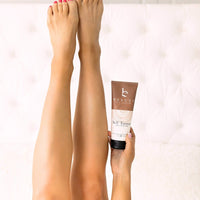
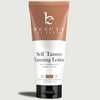
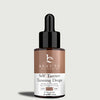
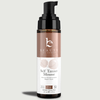
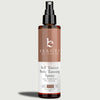
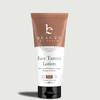
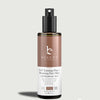
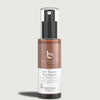
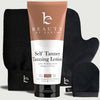
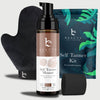

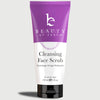
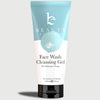

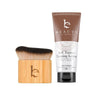











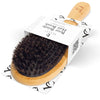
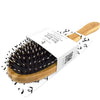
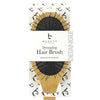
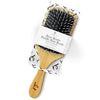
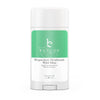


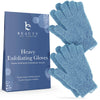
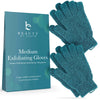
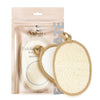


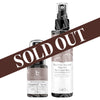





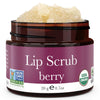
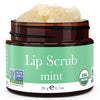
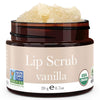





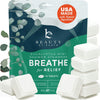
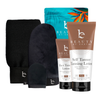
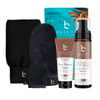


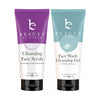
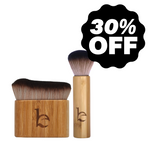
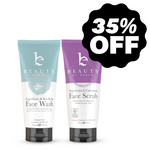















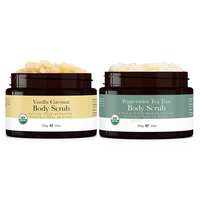
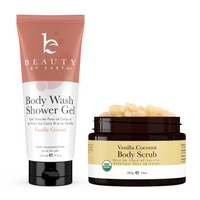
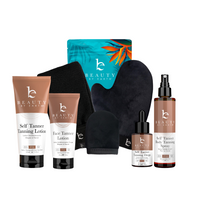
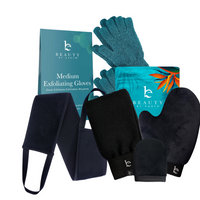
join the conversation